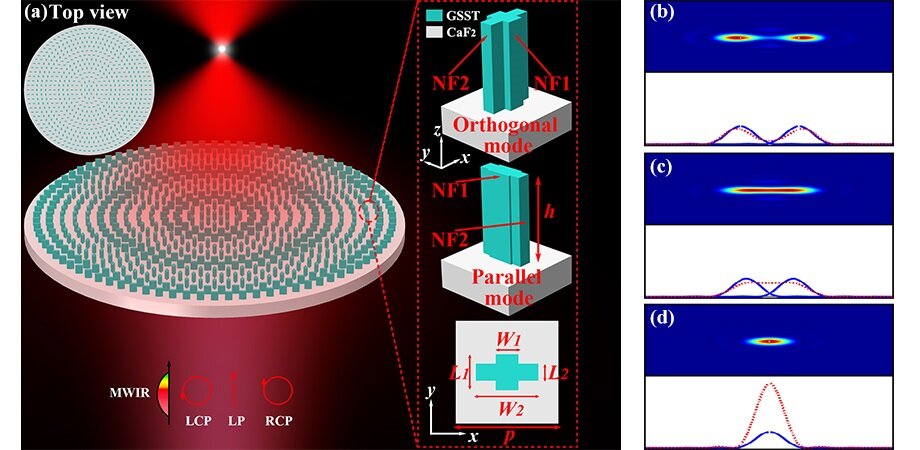Precise control of light is a crucial requirement in optical imaging, sensing, and communication. Traditional lenses employed for the purpose have limitations, necessitating more precise and compact solutions. To address this need, researchers have developed metalenses, ultrathin lenses constructed from nanomaterials that are smaller in size than the wavelength of light. These sub-wavelength elements provide the means to manipulate light waves with exceptional precision, facilitating a precise control of the amplitude, phase, polarization, and direction of light waves.
Moreover, compared to bulky lenses, metalenses are easier to produce and are ideal for miniaturized and highly integrated optical devices. However, the sub-wavelength elements also make them susceptible to chromatic aberration. This is a condition where when light passes through a metalens, each wavelength undergoes a different phase shift upon interaction with the sub-wavelength structures. As a result, the various colors or wavelengths of light do not converge at the same point, leading to a loss of focus and reduced image quality.
Now, in a new study published in Advanced Photonics Nexus, researchers have presented a novel approach for creating broadband achromatic and polarization-insensitive metalenses (BAPIML). Their approach leverages the Rayleigh criterion for spot resolution, a fundamental principle in optics used to define the minimum resolvable detail in an imaging system.
“The scientific and technical advances reported are notable as they offer a path towards resolving chromatic aberration in metasurfaces, a challenge that has hindered progress in the field,” points out journal editor Professor Alex Krasnok from Florida International University.
According to the Rayleigh criterion for spot resolution, closely spaced point sources can be resolved when the center of the diffraction pattern produced by one point source falls on the first minimum of the diffraction pattern of another point source. When the diffraction patterns approach this limit, the two points become indistinguishable from each other. This principle has been instrumental in designing telescopes and microscopes to distinguish celestial objects and capture the minutest details in tiny specimens, respectively. In this study, the researchers ingeniously applied this concept to develop instead two complementary metalenses that merge the bright spots into a single, focused spot.
2023-07-25 16:00:03
Link from phys.org
